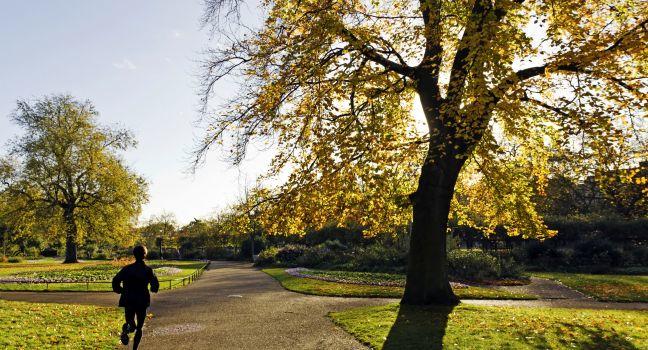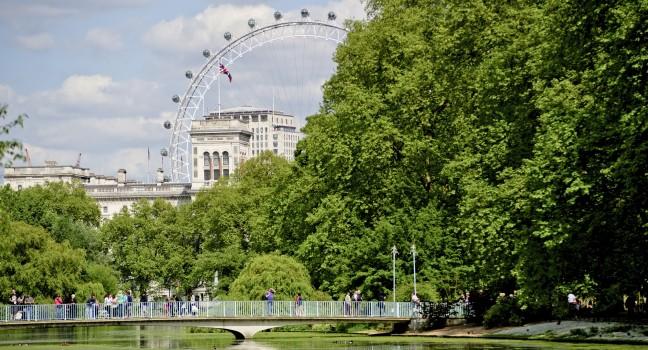Hyde Park

Along with the smaller St. James's and Green Parks to the east, the 350-acre Hyde Park once formed part of Henry VIII's hunting grounds. Along its south side runs Rotten Row—the name is a corruption of Route du Roi (Route of the King), as it became known after William III installed 300 oil lamps to make the busy road less attractive to highwaymen. Today it's a bridle path often used by the Household Cavalry, who are housed in the Hyde Park Barracks occupying two unattractive buildings, a high-rise and a low red block to the left. You can see the Guardsmen in full regalia leaving on horseback for guard duty at Buckingham Palace at about 10:30 (or come at noon when they return). The metal breastplates worn by one of the divisions of the Cavalry were a distinctive feature of Queen Elizabeth II's funeral procession.
Hyde Park is wonderful for strolling, cycling, or just relaxing by the Serpentine, the long body of water near its southern border. On the south side, the Lido Café and Bar by the 1930s Serpentine Lido is a good spot to refuel, and close by is the Diana Memorial Fountain. On Sunday, you'll find the uniquely British tribute to free speech, Speakers' Corner, close to Marble Arch. Though not what it was in the days before people could use the Internet to vent their spleen, it still offers a unique assortment of passionate, if occasionally irrational, advocates literally getting up on soapboxes. Summer sees giant pop concerts with top artists, while during the Christmas season the park hosts a "Winter Wonderland" amusement park, Christmas market, and ice rink.




